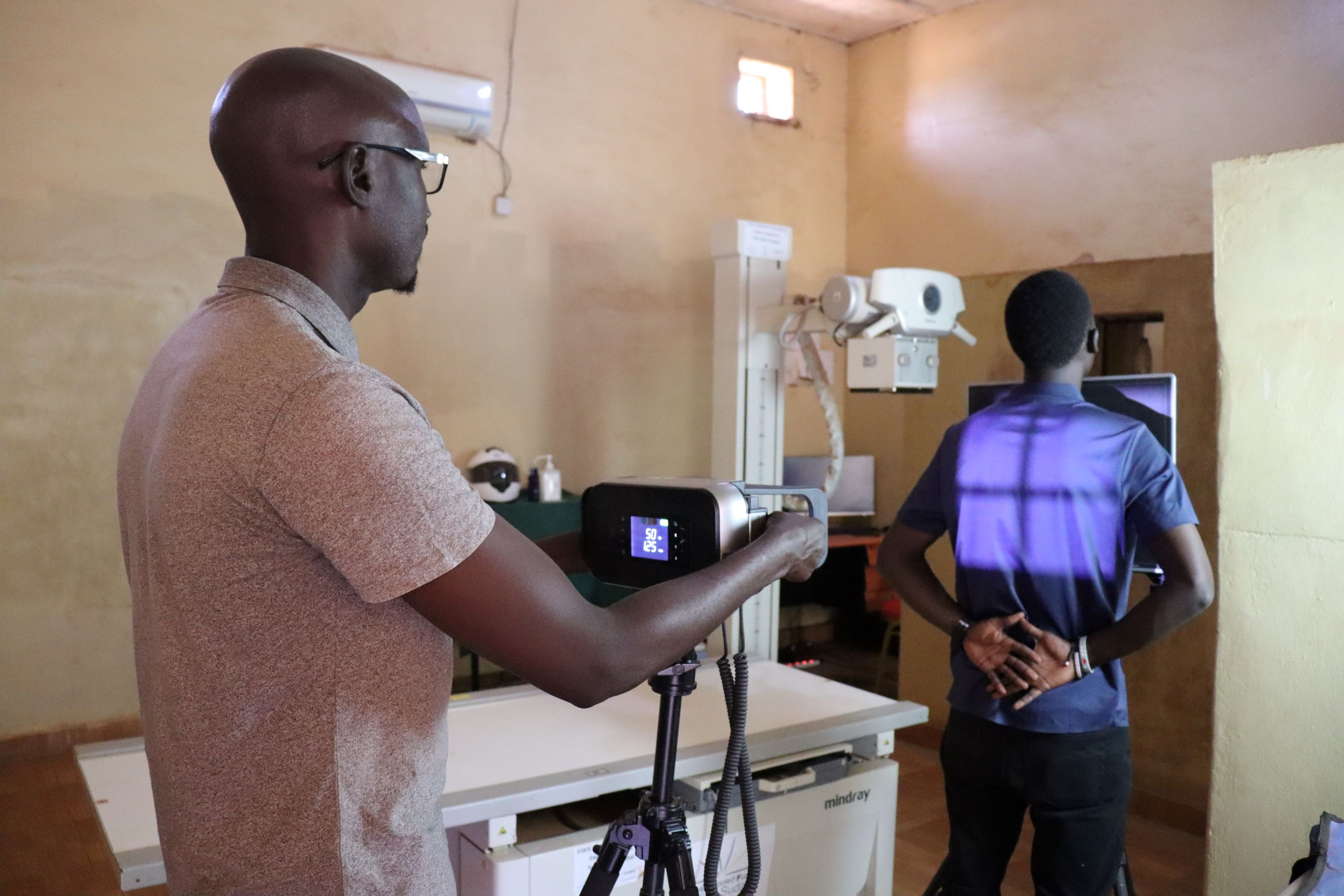Thanks to Global Fund and its funders, in South Sudan, we are beginning to use artificial intelligence to detect TB cases.
Technology Accelerates TB Detection in South Sudan
March 24, 2024

The digital X-ray machines are enabling health care at Torit State Hospital
Every March 24, countries around the globe observe World Tuberculosis (TB) Day to raise awareness and recognize achievements in TB prevention and control, and to renew their commitment to ending this devastating, yet preventable disease by 2030. The theme for this year’s commemoration – Yes, we can end TB – expresses hope that we can turn the tide against this infectious disease. It embodies our collective power and ambition to end TB by 2030 and the need for increased engagement of those affected as well as communities and civil society leading the crusade towards ending TB.
In 2022, TB was ranked as the second leading infectious disease killer worldwide, after COVID-19. It was also the leading cause of death for people living with HIV. According to the 2023 Global Tuberculosis report, 10.6 million people fell ill with TB in 2022 while 1.3 million people died of TB-related causes, including 167,000 deaths among people living with HIV. Drug-resistant TB also remains a major public health concern with an estimated 410,000 people developing multi-drug-resistant forms of TB in 2022 alone! Fortunately, globally, 75 million lives have been saved since 2000 due to our collective efforts to combat TB.
To begin with, anyone can get TB including the young, the old, the rich, the poor, the educated, the uneducated, and the rural and urban dwellers alike. This is because TB is spread through the air, and everyone breathes air. People with TB can also be found everywhere – where we work, live, learn and spend time with family and friends.
Stigma and discrimination
Yet stigma and misunderstanding about TB remains the Achilles heel that bars people from being screened or diagnosed, seeking and adhering to treatment, and that fuels further spread and the needless loss of lives. People are scared to go to the clinic to receive treatment because someone might recognize them and thereafter judge, ostracize and get scared of them. Because of stigma, people are afraid of sharing their fears that they may be sick and asking for help!
In South Sudan, an estimated 25,000 people are diagnosed and treated with TB annually by the Ministry of Health (MOH), and its technical partners the World Health Organisation (WHO), and the Global Fund in partnership with the United Nations Development Programme (UNDP). UNDP has been a valuable partner and a principal recipient for the Global Fund grant in the fight against TB and HIV since 2003 along with the MOH and the rest of the sub-recipients Cordaid International and the Arkangelo Ali Association, which support the provision of TB services in over 200 locations across the country.
Inclusive technologies helping end TB
We must continue to work together to fight this epidemic on multiple fronts through provision of new diagnostics and treatment regimens with digital technologies and innovations at the helm. The innovation cycle for South Sudan began with the introduction and scale-up of GeneXpert technologies, something that many doubted in this challenging environment. We are now entering a new wave of innovation with Artificial Intelligence (AI) assisted digital X-ray machines to scale up case identification in underserved and remote areas.
In this regard, the Ministry of Health, in partnership with UNDP, and with support from the Global Fund, installed two portable digital X-ray machines at Torit and Rumbek state hospitals in December 2023. An additional four machines will be installed soon. These new battery-powered X-ray machines are small, light and easy to transport by hand. One can charge a battery and use it multiple times on a single charge. In a country faced with an acute shortage of power supply, this will help to elevate the diagnosis and treatment of TB in the country.
Given their portability, they can be used in community outreaches to conduct X-rays, a feature lacking in the traditional X-ray machines which are bulky and fixed. This reduces the cost of travelling to health centers for rural patients, who may otherwise delay TB testing until their condition deteriorates. These portable X-ray machines are already linked to multiple benefits including increasing the accuracy of diagnosis, leading to improved treatment outcomes. AI-assisted X-ray machines can also detect other health conditions and complement other interventions such as the use of the multi-disease-testing GeneXpert machines.
With funding from the Global Fund, UNDP provided over 55 GeneXpert machines to reinforce the country’s capacity in diagnosing HIV/AIDS, TB, COVID-19 and other public health threats. A total of 246,677 TB laboratory tests were also conducted from January 2018 to June 2023. Similarly, 95,202 people were enrolled on treatment and 63,046 deaths averted over this period.
More action needed
Yet a lot more needs to be done. This includes increasing financing to scale up diagnosis, prevention and treatment, research and development of new tools including a new TB vaccine, and full adoption and standardization of shorter treatment regimens as per WHO recommendation. We must also continue to find and treat active TB cases as a step-in prevention and elimination of TB.

 Locations
Locations